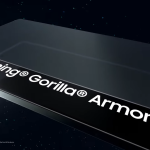The National Aeronautics and Space Administration (NASA) has captured rare footage of a black hole eating up a start and creating a gas cloud that is as large as the solar system. While NASA’s newer James Webb telescope has been the talk of the town these days, the footage was captured by the Hubble after good luck placed the star collapsing closer to the telescope than is generally the case for such events. As a result, astronomers could observe the event for a more extended period, which enabled them to capture more data and compare it to the models they had generated on Earth.
Star Collapse Creates Donut Shaped Gas Cloud Size Of The Milky Way Around A Black Hole
The event of a black hole eating up a star was captured by the Hubble Space Telescope in March last year, and NASA reported the results at an astronomy convention held earlier this month in Seattle. NASA officials dub such events “tidal disruption events,” and they involve an unsuspecting star making its way through the universe when it has the misfortune of coming across a black hole.
Black holes are among the most powerful objects in the known universe, and their gravity is of mindboggling proportions, which is known to suck in light. A typical black hole contains the mass of as much as one hundred suns, while some of the largest, called supermassives, can even contain billions of suns. The largest black hole in the Milky Way galaxy is the Sagittarius A* with 4.3 million solar masses, and the largest black hole ever detected is the Pheonix A. Located at the center of the Pheonix cluster, this beast is 5.7 billion light years away from Earth and has a mass of a stunning 100 billion suns.
This event, which also saw the star’s remains pulled in a donut shape by the black hole around it, is officially referred to as AT2022dsb by NASA. The star is a whopping 300 million light years away from Earth at the core of the galaxy ESO 583-G004. Despite this unfathomable distance, astronomers could study AT2022dsb by analyzing the ultraviolet light emissions from the star through the light ranges of its constituent elements, such as carbon and hydrogen.
A NASA and ESA illustration showing the demise of a star as a black hole devours it. Image: Leah Hustak (STScI), NASA, ESA
The event was first caught by the All Sky Automated Survey for SuperNovae (ASAS-SN) program that is run by astronomers working at the Ohio State University. ASAS-SN, also called ‘Assasin’ (whether in homage to the black holes it helps track down is unclear), is an automated program that consists of close to twenty telescopes that are located all over the world. The system is quite active, and it has discovered several tidal disruption events and supernovas since being set up.
NASA explained that AT2022dsb was closer to Earth than other similar events, leading astronomers working with the Hubble telescope to study it for a longer time than average. Crucially, this added time allowed them to use ultraviolet light, which can provide astronomers with additional information about the elements that are part of an event. Typically, such events are studied with X-Ray light, which offers limited data.
Peter Maksym, head of the Harvard & Smithsonian Center for Astrophysics, explained that the wind speed of particles emitted from the star was an unbelievable 20 million miles per hour. When a star is unfortunate enough to come in the vicinity of a black hole, first its gasses are sucked in and then it is slowly taken apart. The journey ends as remains of the star orbit the black hole in a donut shape and are eventually sucked in.
The post NASA Captures Star Eaten By Black Hole 300 Million Light Years Away by Ramish Zafar appeared first on Wccftech.





